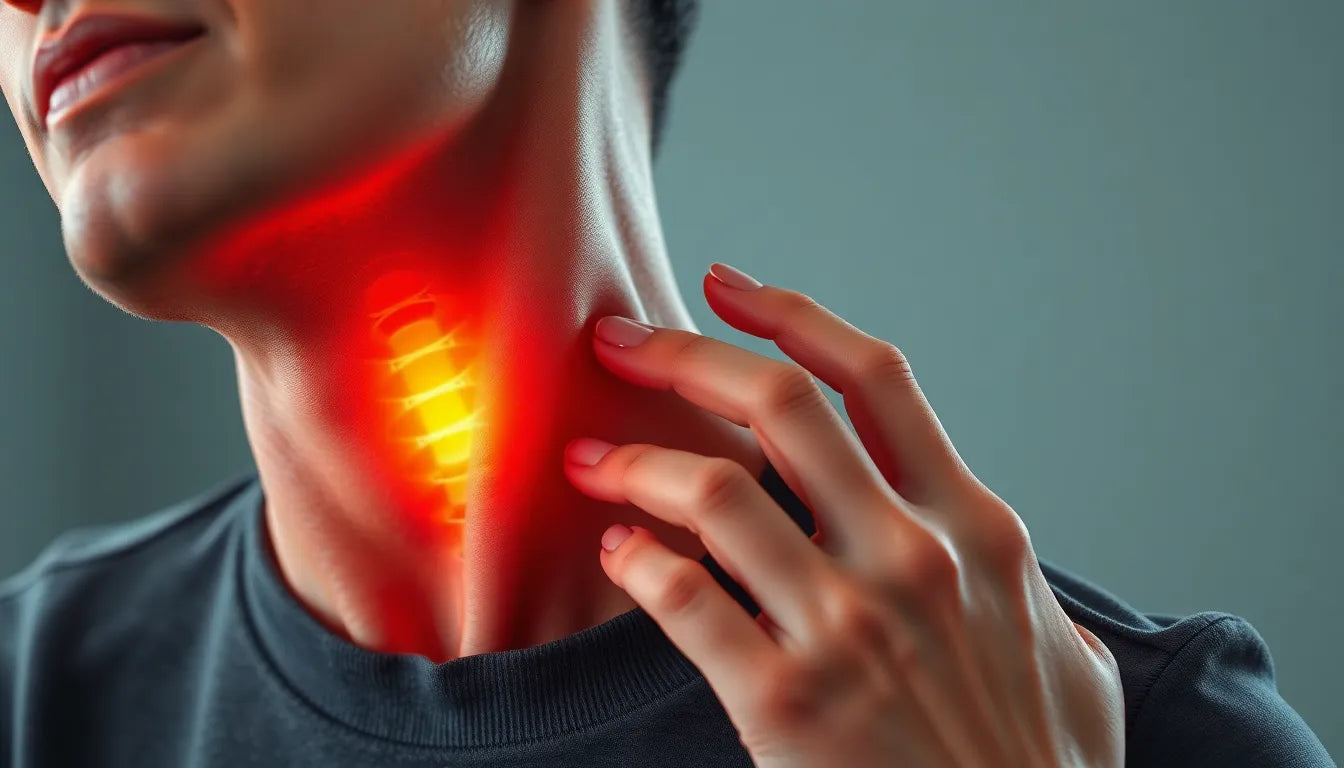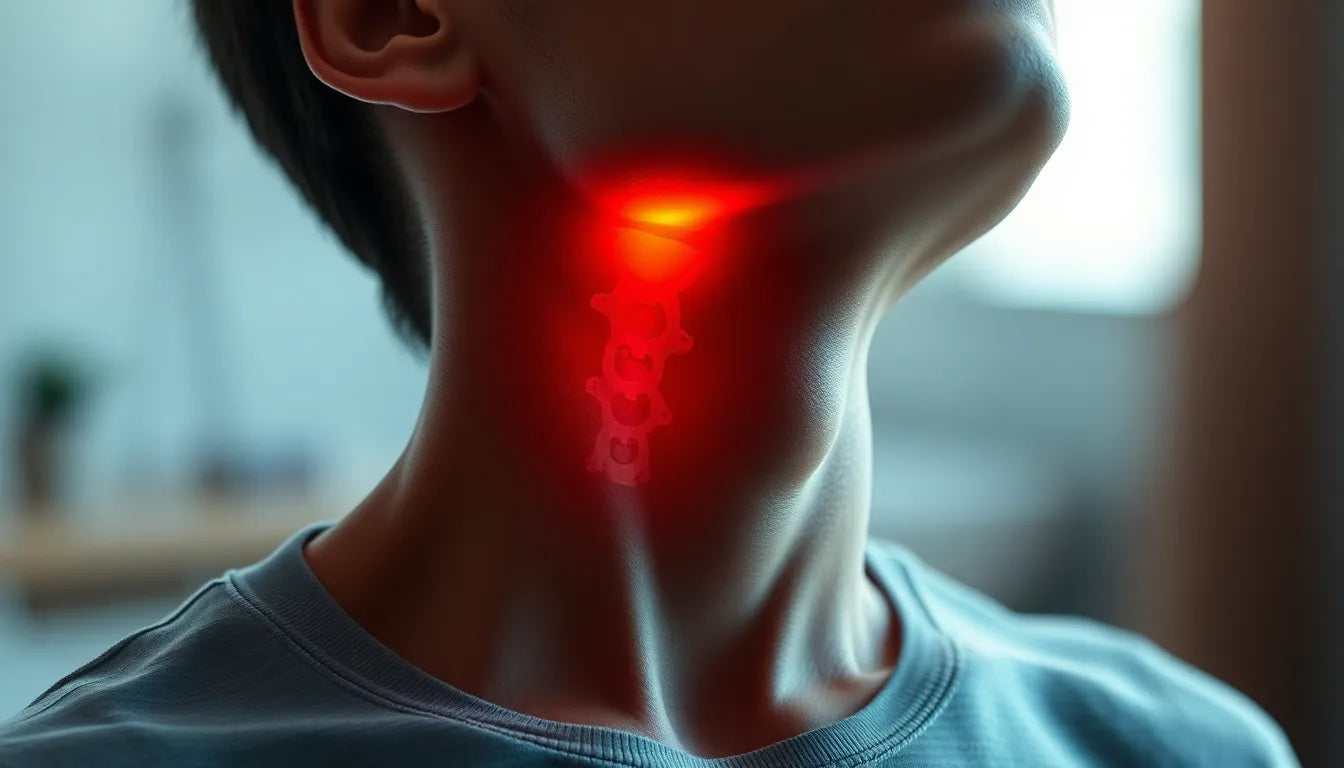The COVID-19 pandemic has brought about a myriad of challenges, not least of which is the emergence of what some refer to as "Corona syndromet." This term encapsulates the various indirect symptoms and lifestyle changes triggered by the global health crisis, including the unexpected rise in lower back pain. As the world grappled with the direct effects of the virus, an increased awareness of these secondary symptoms, such as back pain, has emerged, prompting both concern and a quest for information among the public.
Lower back pain, or "ondt i lænden," has become a significant concern during the pandemic, not as a direct symptom of COVID-19, but rather as a consequence of the lifestyle shifts necessitated by lockdowns and social distancing measures. The search for information on this topic reflects a dual intent: individuals are not only seeking to understand the causes and implications of their discomfort but are also driven by a need to find solutions and reassurance. This dual nature of search intent highlights the growing public interest in addressing and mitigating the impacts of these lifestyle changes on physical health.
The rise of back pain during the pandemic
As many transitioned to remote work and faced restrictions on physical activity, the incidence of back pain has surged. The shift to home offices often meant makeshift workstations that lacked proper ergonomic support, leading to poor posture and increased strain on the back. Coupled with a decrease in overall physical activity due to gym closures and limited outdoor exercise opportunities, these factors have contributed significantly to the prevalence of lower back pain during the pandemic.

Lumbar support belt
Supports and stabilizes your lower back, relieves pain, and is ideal for use while active or sitting.
Though back pain is not typically recognized as a primary symptom of COVID-19, the pandemic has undeniably influenced its occurrence. The indirect effects of the virus, particularly the societal and lifestyle changes it necessitated, have created a fertile ground for what is now being observed as a growing concern. This phenomenon underscores the importance of addressing these indirect symptoms, as they can have a profound impact on individuals' quality of life.
Understanding the broader context of "Corona syndromet" is crucial for those experiencing back pain during this time. By acknowledging the multifactorial causes—ranging from physical inactivity and poor ergonomics to heightened stress levels—individuals can better navigate the challenges posed by this unprecedented period. As we continue to adapt to the evolving landscape of the pandemic, recognizing and addressing these indirect health impacts remains vital.
Clinical insights on back pain and COVID-19
While lower back pain isn't commonly listed as a direct symptom of COVID-19, the pandemic has nonetheless brought attention to it as a consequence of both the virus and the lifestyle changes it has necessitated. Clinically, back pain associated with COVID-19 is often attributed to inflammation and immune responses triggered by the virus. This can result in musculoskeletal discomfort, which, although less recognized, is a real concern for those affected.
According to insights from Anodyne.dk and Smerteogsport.dk, the phenomenon referred to as "Corona syndromet" encompasses a complex interplay of physical and psychological impacts. This syndrome highlights how the pandemic's stress, combined with physical inactivity and poor ergonomics, can exacerbate back pain. Understanding these clinical perspectives is crucial for addressing the multifactorial nature of back pain during this global crisis.
Factors contributing to back pain during COVID-19
Physical inactivity
One of the most significant factors contributing to back pain during the pandemic is physical inactivity. With lockdowns and remote work becoming the norm, many individuals have found themselves sitting for prolonged periods, often in less-than-ideal conditions. This sedentary lifestyle can lead to muscle stiffness and weakness, particularly in the lower back, exacerbating pain.
Stress and mental health
The pandemic has also taken a toll on mental health, with increased stress and anxiety levels reported globally. Stress is known to have a direct impact on physical health, often manifesting as muscle tension and pain. The psychological strain of the pandemic can worsen existing back pain or even trigger new episodes of discomfort, creating a cycle of stress and physical pain that can be challenging to break.
Ergonomics and home workstations
Another critical factor is the makeshift nature of many home workstations. With little time to prepare for the sudden shift to remote work, many individuals have been working in non-ergonomic conditions. Poor posture, inadequate seating, and improper desk setups can all contribute to increased strain on the back, leading to pain and discomfort. Addressing these ergonomic issues is essential for reducing back pain during prolonged periods of home-based work.

Women's Posture Shirt™ - Black
Patented Posture Shirt™ activates muscles to relieve pain and promote better posture throughout the day.
Visual aid: multifactorial causes of back pain during COVID-19
To better understand the multifaceted nature of back pain during the pandemic, consider the following table, which outlines the various contributing factors:
| Factor | Impact on Back Pain |
|---|---|
| Physical Inactivity | Leads to muscle stiffness and weakness, increasing pain |
| Stress and Anxiety | Contributes to muscle tension and exacerbates pain |
| Poor Ergonomics | Results in poor posture and increased back strain |
By recognizing these factors, individuals can better address and mitigate the impact of back pain during the ongoing pandemic. Implementing strategies to increase physical activity, manage stress, and improve ergonomic conditions at home can significantly alleviate discomfort and improve overall well-being.
Strategies for managing and preventing back pain during the pandemic
As the pandemic continues to influence our daily routines, adopting effective strategies to manage and prevent lower back pain becomes crucial. By incorporating regular physical activity, making ergonomic adjustments to home workspaces, and employing stress management techniques, individuals can significantly alleviate discomfort and enhance their overall well-being.
Exercise and physical activity
Engaging in regular physical activity is key to combating the effects of prolonged inactivity. Simple exercises such as stretching, yoga, and core strengthening can help alleviate back pain. Rigshospitalet recommends exercises like pelvic tilts, knee-to-chest stretches, and gentle twisting movements to maintain flexibility and strengthen the back muscles. These activities not only help in reducing existing pain but also serve as preventive measures against future discomfort.
Ergonomic adjustments
Improving the ergonomics of your home workspace is essential for preventing back pain. Ensure that your chair provides adequate lumbar support and that your computer screen is at eye level to avoid straining your neck and back. Additionally, consider using a standing desk or taking regular breaks to stand and stretch. Small changes like these can make a significant difference in reducing the strain on your back during long hours of work.
Stress management techniques
The psychological impact of the pandemic has been profound, with stress and anxiety contributing to physical discomfort. Incorporating stress management techniques such as mindfulness meditation, deep breathing exercises, and progressive muscle relaxation can help reduce tension and alleviate back pain. By addressing both the physical and psychological aspects of pain, individuals can achieve a more holistic approach to well-being.
Patient stories and case studies
Real-world experiences provide valuable insights into the impact of "Corona syndromet" on back pain. For instance, many individuals have reported experiencing severe muscle and joint pain, particularly in the second week of COVID-19 infection. These stories highlight the importance of recognizing and addressing back pain as a legitimate concern during the pandemic. By sharing patient stories, we can foster a greater understanding of the multifaceted nature of back pain and encourage others to seek appropriate care and management strategies.
Frequently Asked Questions
What is "Corona syndromet"?
"Corona syndromet" refers to the collection of indirect symptoms and lifestyle changes brought about by the COVID-19 pandemic. It encompasses both physical and psychological impacts, including lower back pain, which has emerged as a concern due to factors like inactivity, stress, and poor ergonomics.
Can COVID-19 directly cause back pain?
While back pain is not a primary symptom of COVID-19, the virus can trigger inflammation and immune responses that may lead to musculoskeletal discomfort. However, lifestyle changes during the pandemic, such as increased inactivity and stress, are more commonly associated with the rise in back pain.
When should I see a doctor for back pain?
If you experience severe or persistent back pain, numbness, tingling, or weakness in your legs, or if the pain is accompanied by other concerning symptoms like fever or unexplained weight loss, it is important to seek medical attention. These could be signs of a more serious condition that requires professional evaluation.
What exercises can help alleviate back pain?
Simple exercises such as pelvic tilts, knee-to-chest stretches, and gentle twisting movements are recommended to alleviate back pain. These exercises help maintain flexibility, strengthen back muscles, and reduce discomfort. It is advisable to consult with a healthcare professional before starting any new exercise regimen.
How can I improve my home office setup to reduce back pain?
To improve your home office setup, ensure your chair provides adequate lumbar support, position your computer screen at eye level, and consider using a standing desk. Taking regular breaks to stand and stretch can also help reduce strain on your back. These ergonomic adjustments can significantly alleviate discomfort associated with prolonged sitting.
Kilder
- Smerte og Sport. (2020). "Corona syndromet." Smerte og Sport.
- Sundhedsstyrelsen. (2020). "Symptomer på COVID-19." Sundhedsstyrelsen.
- Medicin.dk. (2020). "COVID-19." Medicin.dk.
- Bavnhoj, S. (2020). "Corona i kroppen." Stina Bavnhoj.
- Rigshospitalet. (2020). "Ledende overlæge fik COVID-19: Det værste jeg har prøvet." Rigshospitalet.
- Region Midtjylland. (2020). "Rygsmerter er sjældent tegn på noget alvorligt." Region Midtjylland.


















